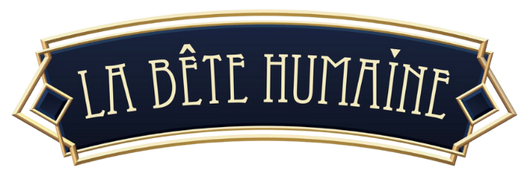With Peter and Moka, tattoo artists at La Bête Humaine
Trickster monsters, haunted objects, wandering spirits, or shapeshifting animals… Yōkai have inhabited the Japanese imagination for centuries. These supernatural beings embody fears, symbols, or simply a poetic view of the invisible world. Neither good nor evil, often somewhere in between, they fascinate with their sheer diversity. And in the world of tattooing, they open up endless creative possibilities. At La Bête Humaine, artists Peter (@mr.tanukittt) and Moka @mokatattoo) regularly dive into this folklore to bring vivid, powerful designs to life.
A Boundless and Infinite Bestiary
For Peter, “yōkai are a universe of endless possibilities.” Their aesthetic richness is unquestionable, but it’s their ability to take on any form – animal, object, spirit – that truly inspires him.
“You can even modernize them: imagine a smartphone turning into a little monster… one that sucks out a bit of your soul every hour you spend on social media.”
Moka shares this vision of an unlimited universe: “Each yōkai has its own personality and story. That means every tattoo can be completely unique, with its own narrative and a deeply personal feel.”
Inspiring Figures with Many Faces
What are their favorite yōkai to tattoo?
Peter chooses the Chōchin-Obake, a lantern spirit: “The shapes, the colors, the light – everything’s there to make a striking tattoo.” That said, his heart still belongs to the mischievous tanuki: “It kind of reminds me of myself,” he laughs.
Moka is drawn to Aoandon, a blue-skinned female demon tied to Japanese ghost stories: “She represents the moment when fiction becomes reality – she brings the stories to life.”
These aren’t random picks. Each tattoo is built from a thoughtful visual composition. Peter draws on elements related to the yōkai itself or from traditional Japanese tattooing, adapting them depending on what the client wants the tattoo to symbolize.
Moka emphasizes the importance of research: “You need to understand the yōkai’s origin, its behavior – that’s what guides the composition, the background, the colors. The goal is to tell a story.”

Tradition Reimagined, Styles Embraced
Both artists proudly lean toward new school tattooing, far from rigid representations.
“Cartoon styles work so well with the yōkai universe,” Peter explains. “You can play with shapes, distort things, emphasize their weirdness.”
Moka agrees: “I love the look of traditional Japanese prints, but I need movement. New school allows for more dynamic and expressive compositions.”
A creative freedom that matches the very spirit of yōkai – elusive, shifting, never pinned down.
Demand, Symbolism, and Evolution
Some clients show up with a clear idea of which yōkai they want. Others let themselves be guided by the flash designs. Either way, Peter and Moka work closely with them on placement, composition, and adapting the piece to the body.
The most requested figures?
The iconic Hannya, well-known even to those unfamiliar with Japanese folklore, and the ever-popular Kitsune, boosted in recent years by pop culture.
Despite this increased visibility, yōkai tattoos are still niche:
“We’d love to do more,” Peter says, “but demand is still fairly low.”
“They’re still in a kind of underground circle, mostly known to enthusiasts,” Moka adds. “Maybe this article will help change that.”


Technical Challenges and Placement Freedom
Tattooing a yōkai requires both precision and creativity. For Peter, the main challenge is:
“Keeping the composition dynamic and readable despite all the complexity.”
Moka highlights the importance of placement and color: “Large, flat areas like the back or thigh are perfect for developing a detailed yōkai universe.”
That said, there are no forbidden zones:
“What matters most is the client’s intention – and making sure the tattoo suits their body and will age well,” Peter concludes.
Yōkai and Pop Culture: A Universal Folklore
Though still relatively unknown to the general public, yōkai have already left their mark on pop culture.
“Pokémon, Bleach, Ghibli… tons of characters are directly inspired by yōkai,” says Peter. “They speak to the child in us – to our fears, our dreams, our imagination.”
Moka agrees: “Right now, it’s mostly die-hard fans who are into it. But yōkai have everything it takes to reach a broader audience: they’re free, open, and full of stories.”
Tattooing the Invisible
Getting a yōkai tattoo isn’t just about decorating your body with a cool creature. It’s about opening a door to another world, telling a story – or simply bringing a cheeky little spirit to life who might follow you around… to protect you, or maybe just to steal your socks.
Thanks to artists like Peter and Moka, these ancient beings find new life on human skin – and maybe, soon, on yours.

Contact Us
Tell us about your project through the “Book an Appointment” page or reach out directly:
- ✉️ Email: labetehumainetatouage@gmail.com
- 📲 DM us: Facebook or Instagram
- ☎️ Phone: +33 1 44 59 68 20
See you soon at La Bête Humaine. 💛

